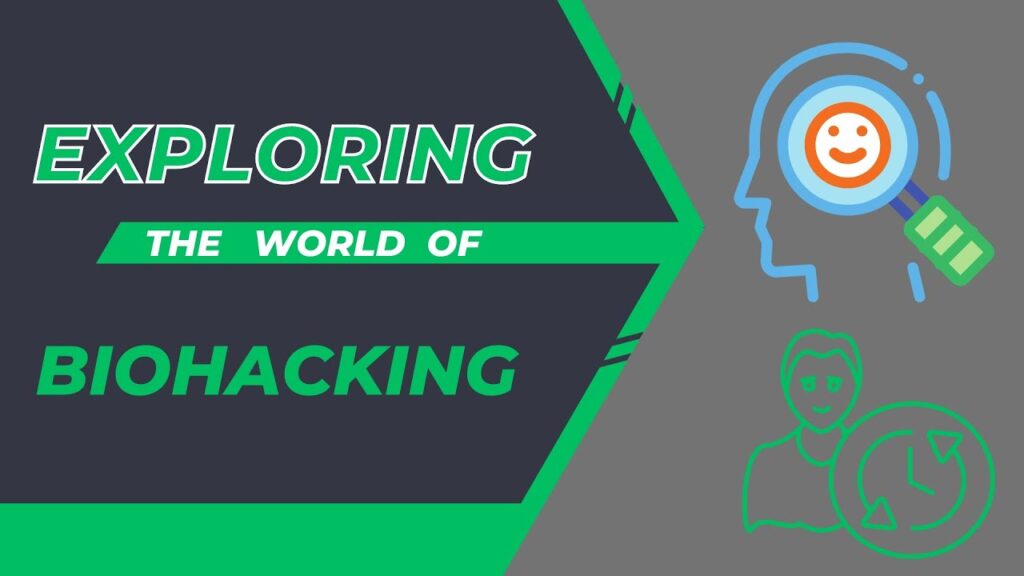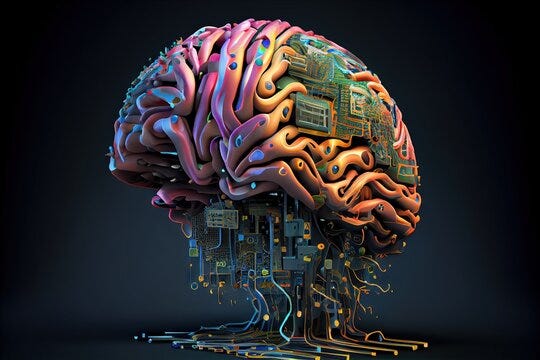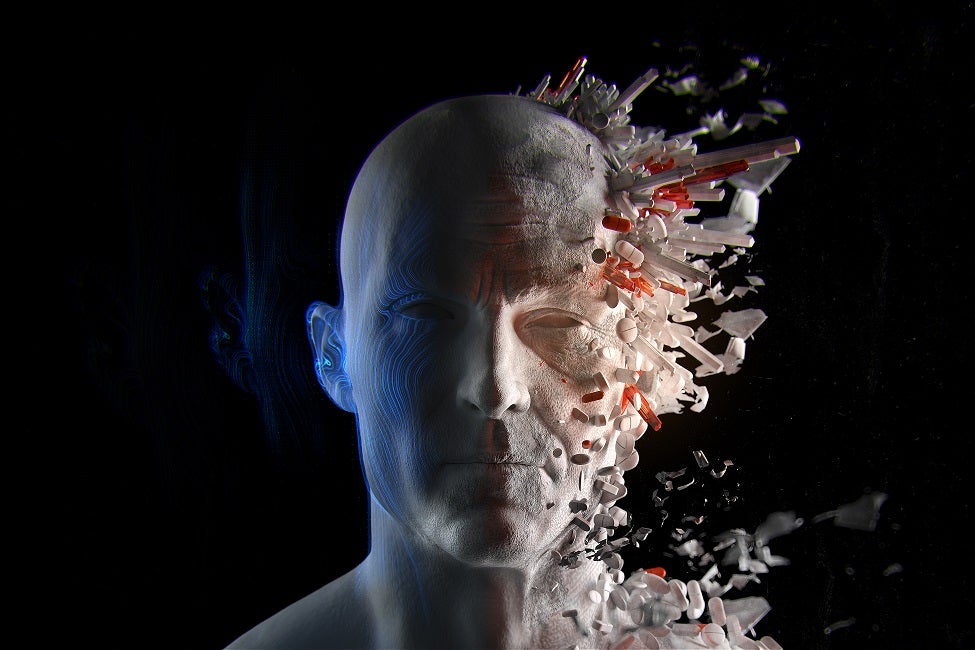In this fascinating article, you will delve into the exciting world of biohacking. Biohacking refers to the DIY biology movement that aims to optimize and enhance human performance through self-experimentation and the use of technology. From microchip implants to genetic modifications, biohacking encompasses a wide range of innovative practices that blur the boundaries between biology and technology. Embark on a journey of discovery as you explore the latest trends, potential benefits, and ethical considerations surrounding this rapidly evolving field. Get ready to unlock the potential of your own biology as we dive into the world of biohacking.

This image is property of i.ytimg.com.
History of Biohacking
Biohacking, a term that encompasses various methods and techniques aimed at enhancing human performance and biology, has a fascinating history that dates back centuries. The early origins of biohacking can be traced to ancient civilizations where individuals experimented with herbal remedies and natural substances to improve their physical and cognitive abilities.
Early Origins of Biohacking
In ancient China, traditional practices such as acupuncture and herbal medicine were forms of biohacking, as they aimed to optimize the body’s energy flow and promote overall well-being. Similarly, Ayurveda, the traditional medicine system of India, utilized various herbs and practices to balance the body’s energies and enhance vitality.
The emergence of alchemy in the medieval period also played a significant role in the early history of biohacking. Alchemists sought to transform and purify substances, believing it would lead to physical and spiritual transcendence. While their experiments often focused on turning base metals into gold, they also ventured into elixirs and potions that were believed to improve health and prolong life.
The Emergence of Modern Biohacking
Modern biohacking as we know it today began to take shape in the late 20th century with the advances in technology and scientific understanding. The first biohacking experiments were centered around genetic modification and biotechnology.
In the 1970s, the advent of recombinant DNA technology enabled scientists to manipulate genetic material and create genetically modified organisms (GMOs). This breakthrough opened up new avenues for biohackers to explore the potential of altering the genetic code to improve various aspects of human biology.
Several key figures emerged during this period as pioneers in biohacking. One notable example is Josiah Zayner, a biochemist who gained attention for injecting himself with a DIY CRISPR gene-editing kit during a public conference in 2017. Zayner’s bold act sparked a discussion on the ethical and safety implications of biohacking.
Key Figures in Biohacking
Apart from Josiah Zayner, numerous individuals have made significant contributions to the field of biohacking. Notable figures include Tim Cannon, co-founder of Grindhouse Wetware, who implanted a computer chip beneath his skin to monitor his own biometric data. Another prominent figure is Amal Graafstra, who became one of the first individuals to implant an RFID chip in his hand, allowing him to interact with technology seamlessly.
These key figures in biohacking have not only pushed the boundaries of what is possible but have also sparked a broader movement of enthusiasts and communities dedicated to exploring the potential of human enhancement.
Biohacking Techniques
Biohacking encompasses a wide array of techniques and approaches aimed at optimizing human biology and performance. From genetic modification to brain enhancement, biohackers employ various methods to push beyond the limits of human potential.
Genetic Modification
Genetic modification is one of the most prominent techniques used in biohacking. With the advent of CRISPR-Cas9 technology, it has become increasingly accessible for biohackers to manipulate genes and potentially alter traits associated with physical and cognitive performance. While this field holds immense promise, there are ethical considerations and safety concerns that need to be carefully addressed.
DIY Biology
Another technique prevalent in the biohacking community is DIY biology. This approach involves individuals conducting biological experiments and research outside of traditional academic or industry settings. DIY biology enables biohackers to explore innovative ideas and concepts in a more accessible and decentralized manner.
Nootropics and Brain Enhancement
Nootropics, also known as “smart drugs,” are substances that are believed to enhance cognitive function. Biohackers often experiment with various nootropics, such as modafinil or Racetams, to improve focus, memory, and overall mental performance. However, it is crucial to approach the use of nootropics with caution and adhere to proper dosage recommendations.
Cryotherapy and Cold Exposure
Cold exposure, such as cryotherapy, is another biohacking technique gaining popularity. By subjecting the body to extreme cold temperatures, biohackers aim to trigger various physiological responses that can potentially improve circulation, reduce inflammation, and enhance overall well-being. It is essential to approach cold exposure safely and under the guidance of trained professionals.
Implantable Technology
The advent of implantable technology has opened up new possibilities for biohackers. From RFID chips to neural implants, these technological advancements allow for the integration of technology with the human body. Implantable devices can monitor biometric data, enhance sensory capabilities, and even replace damaged body parts. However, the ethical implications and long-term effects of implantable technology need to be carefully considered.
Potential Benefits of Biohacking
Biohacking offers a range of potential benefits that could revolutionize various aspects of human life. From enhanced physical performance to improved cognitive function, these benefits have the potential to transform not only individual lives but also society as a whole.
Enhanced Physical Performance
Through techniques such as genetic modification and training optimization, biohacking has the potential to push the boundaries of physical performance. By manipulating genes associated with muscle growth or endurance, biohackers aim to enhance athletic abilities and overall physical prowess.
Improved Cognitive Function
Biohacking techniques such as nootropics and brain training exercises have the potential to improve cognitive function. By optimizing brain health and enhancing neural pathways, biohackers aim to boost memory, focus, and overall mental agility.
Increased Longevity
One of the most intriguing aspects of biohacking is its potential to extend human lifespan. Through targeted genetic modifications and interventions aimed at slowing down the aging process, biohackers hope to unlock the secrets to prolonged youthfulness and increased longevity.
Treatment of Medical Conditions
Biohacking holds promise in the treatment of various medical conditions. By focusing on targeted genetic therapies and personalized medicine, biohackers aim to develop innovative treatments and potentially even find cures for diseases that have long plagued humanity.
Ethical Considerations in Biohacking
As biohacking continues to evolve, it raises important ethical considerations that must be addressed to ensure the responsible and safe advancement of the field.
Safety and Regulation
With the increasing accessibility of biohacking techniques, safety and regulation become paramount. It is crucial to establish guidelines and frameworks that promote responsible experimentation and minimize potential risks. Ethical discussions surrounding the safety of genetic modifications and the long-term effects of various biohacking techniques are essential.
Informed Consent
Informed consent becomes a crucial aspect when individuals engage in biohacking experimentation. It is essential for biohackers to fully understand the risks involved and provide informed consent for any procedures or interventions they undergo. Ensuring transparency and clear communication between biohackers and practitioners is vital to maintain ethical standards.
Equitable Access
Biohacking should strive for equitable access and inclusion. As the field continues to develop, it is crucial to ensure that the benefits and advancements are accessible to all, regardless of economic or social status. Biohacking should not exacerbate existing inequalities but rather aim for inclusivity and social impact.
Unexpected Consequences
Biohacking is a rapidly evolving field, and there is a potential for unexpected consequences to arise. It is crucial to carefully monitor and evaluate the long-term effects of various interventions and techniques. Ethical considerations must include ongoing assessments of the potential risks and unintended consequences that may impact individuals and society as a whole.

This image is property of miro.medium.com.
Biohacking Communities and Movements
Biohacking has become more than just a collection of techniques – it is now a thriving community of like-minded individuals who share a passion for human enhancement.
Biohackerspaces
Biohackerspaces, also known as “DIYbio labs,” are physical locations where biohackers can gather, collaborate, and share resources. These spaces provide a supportive environment for experimentation, research, and innovation. Often equipped with the necessary tools and equipment, biohackerspaces facilitate access to resources that would otherwise be difficult to obtain.
Quantified Self Movement
The Quantified Self movement focuses on self-tracking and self-experimentation to gain insights into personal health and well-being. Biohackers who embrace the Quantified Self movement use wearables, sensors, and other technologies to collect data on various aspects of their lives, including sleep patterns, nutrition, and exercise. Analyzing this data allows individuals to make informed decisions and optimize their health and performance.
Transhumanism
Transhumanism is a philosophical movement that advocates for using technology to enhance human capabilities beyond their natural limits. Biohacking aligns closely with transhumanism, as it explores the intersection of biology, technology, and human potential. Transhumanist biohackers aim to push the boundaries of human biology and evolve towards a post-human state.
Biohacking and Personal Privacy
As biohacking techniques continue to advance, the issue of personal privacy becomes a significant concern, particularly regarding the collection and use of biometric data.
Data Security and Privacy Concerns
The integration of technology and biology raises concerns regarding the security and privacy of personal biometric data. Biohackers who use wearable devices or implantable technologies may generate vast amounts of personal health data. It is crucial to establish robust security measures to protect this data from unauthorized access and ensure that individuals have control over who can access their personal information.
Ownership and Control of Personal Biometric Data
The issue of ownership and control of personal biometric data is another ethical consideration in biohacking. Individuals need to have a say in how their data is used and shared. Clear guidelines and policies should be established to ensure that individuals retain ownership and control over their personal health information.

This image is property of res.cloudinary.com.
Controversies Surrounding Biohacking
As with any emerging field, biohacking is not without its controversies and potential risks. Understanding these controversies is crucial for further discussions and research.
Ethical Boundaries
One of the main controversies surrounding biohacking revolves around defining the ethical boundaries of human enhancement. The question of what is considered acceptable or permissible in terms of altering human biology sparks intense debates about the implications and potential risks associated with biohacking.
Potential Risks and Dangers
While biohacking offers promising advancements, there are potential risks and dangers involved. Experimenting with genetic modifications or substances that alter brain function can have unforeseen consequences. It is essential to conduct thorough research and adhere to strict safety protocols to minimize the potential risks associated with biohacking.
Societal Impact and Inequality
Biohacking has the potential to exacerbate existing societal inequalities. The accessibility of certain biohacking techniques and technologies may disproportionately benefit certain individuals or groups, further widening the gap between the “enhanced” and the “non-enhanced.” It is crucial to address these societal implications and strive for a more equitable distribution of biohacking advancements.
Biohacking in Sports and Athletics
The world of sports and athletics has not been immune to the influence of biohacking. Increasingly, athletes and sports enthusiasts are exploring various biohacking techniques to gain a competitive edge.
Performance Enhancement in Sports
Biohacking has the potential to enhance athletic performance through genetic modifications, nootropics, and other techniques. However, the use of certain performance-enhancing substances or technologies may violate anti-doping regulations and raise ethical concerns regarding fair play and equal competition.
Doping and Anti-Doping Regulations
The use of banned substances and practices in sports, commonly known as doping, has been a persistent issue. As biohacking techniques continue to advance, it is crucial for anti-doping organizations to adapt and update their regulations to address the emerging challenges posed by these new methods. Striking a balance between ensuring fair play and allowing for scientific advancements in biohacking is an ongoing challenge.

This image is property of wired.me.
The Future of Biohacking
The future of biohacking holds immense potential and promises to revolutionize our understanding of human biology and capabilities.
Advancements in Gene Editing
Advancements in gene editing technologies, such as CRISPR-Cas9, hold the promise of more precise and efficient genetic modifications. As techniques become increasingly refined, biohackers will have greater control over manipulating the human genome, potentially allowing for unprecedented enhancements and treatments of genetic disorders.
Integration of Technology and Biology
The integration of technology and biology will continue to shape the future of biohacking. Novel implantable devices, wearable sensors, and advancements in nanotechnology offer opportunities to seamlessly merge technology with the human body. This integration has the potential to revolutionize medical treatments, enhance sensory perception, and unlock new possibilities for human potential.
Biohacking for Space Exploration
Biohacking may play a crucial role in space exploration and colonization. As humans venture beyond Earth, biohacking techniques can be utilized to enhance astronaut performance and mitigate the effects of extended space travel. Genetic modifications to protect against radiation, cognitive enhancements for extreme environments, and bioengineered food sources are all areas where biohacking can contribute to space exploration.
Conclusion
Biohacking represents an exciting and rapidly advancing field that explores the potential of human optimization and enhancement. With a rich history spanning ancient civilizations to the modern era, biohacking techniques have evolved to encompass genetic modification, brain enhancement, and integration of technology. While offering potential benefits in physical performance, cognitive function, and medical treatments, biohacking also raises important ethical considerations, including safety, consent, and equitable access. The biohacking community, along with various movements such as the Quantified Self and transhumanism, is driving the exploration of new frontiers. As biohacking continues to evolve, it is crucial to address controversies, ensure personal privacy, and develop regulations that balance advancement with ethical responsibility. With ongoing advancements in gene editing, the integration of technology and biology, and its potential applications in space exploration, the future of biohacking holds tremendous promise.

This image is property of www.pharmaceutical-technology.com.

